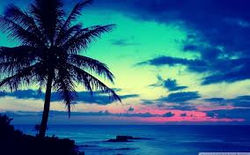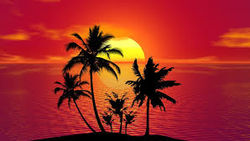advertising
Advertising is the industry in which organisation market a product, service or idea to a target audience through a variety of communication platforms
Product - A physical item that can be sold
Idea - Something that can influence someone's opinions or actions
Service - Something to be made a part of and made use of/ Something useful to the audience and benefits its users
maslow's hierarchy of needs theory
Self-actualization needs -realizing personal potential, self-fulfilment, seeking personal growth and peak experiences.
Esteem needs - which Maslow classified into two categories: (1) esteem personally (dignity, achievement, independence) and (2) the desire for respect from others (e.g., status). Maslow indicated that the need for respect or reputation is most important for children and adolescents and find real self-esteem or dignity.
Love and belonging needs - after physiological and safety needs have been fulfilled, the third level of human needs is social and involves feelings of belonging, The need for relationships motivates behaviour
Examples include friendship, intimacy, trust, receiving and giving affection and love (family, friends, work).
Safety needs -protection from elements, security, order, law, stability, freedom from fear.
Physiological needs -these are basic requirements for human survival, e.g. air, food, drink, shelter, clothing, warmth, sex, sleep.
If these needs are not satisfied the human body cannot function optimally. Maslow considered physiological needs the most important as all the other needs become secondary until these needs are met.

Types of media
-
Newspaper
-
magazines
-
Flyers
-
Business cards
-
Postcards
ONLINE/ DIGITAL
-
Websites
-
Email
-
Snapchat
-
Instagram
-
Facebook
AUDIO
-
CD's
-
phone
-
radio
-
MP3
-
Youtube
MOVING IMAGE
-
Cinema Trailers
-
GIF
-
TV adverts
-
Youtube
Content delivery
Task 1
-
Airbrushing, high key lighting - portrays beauty, purity, perfection
-
Calvin Klein - connotes luxury+wealth
-
Text, large, sans-serif, bold, placed in the centre- presents the clear use of beauty 'SOPHISTICATED'
-
The ad focuses on the model more than the perfume and the model in the poster because she covers up all of the second middle third of the page while the perfume takes up the bottom right third
-
Long shot+ costume represents an angelic presence

Task 2
Gillian Dyer
Gillian Dyer suggests that advertisers use, among other techniques, the following lines of appeal. They use images of or references to these things to connect into our desires :
-
Happy families - everyone wants to belong
-
Rich, luxurious lifestyles - aspirational
-
Dreams and fantasy
-
Successful romance and love
-
Elite people or experts
-
Glamorous places
-
Successful careers
-
Art, culture & history
-
Nature & the natural world
-
Beautiful women - men AND women like looking at beautiful women, so the thinking goes: men admire women and women admire the men admire them.
-
Self-importance & pride
-
Comedy & humour
-
Childhood - can appeal to either nostalgia or to nurturing instinct
Task 3
So in this task, we had to think of adverts that represent each one of those elements:
The new Dyson vacuum ad- The new Samsung phone ad-
The beroccuca ad-
Kevin Hart car ad-
Together possible WWF-
Headspace reality-
Chanel perfume ad-
Tesco Christmas ad-
KFC ad love is forever
Evain baby advert
Harvey & friends/ Relish dating ad
Security sytem ad
Nike better for it inner thoughts
Morality ad
Physical/ basic needs
Love
Safety
Self esteem
Self actualisation
Click for-Key definitions
The publicizing of a product, an organisation to increase sales or public awareness
PROMOTION
The action or business of promoting and selling products or services, including market research
MARKETING
The process of making people aware of something
PUBLICITY
PUBLIC
RELATIONS
Matience of a public image (making sure how you want to be percieved by public is how you are getting percieved)
SOCIAL
MEDIA
Websites and applications that enable users to create and share content or to participate
CAMPAIGN
An organised course of action promote something
BUZZ
AND
HYPE
Hype is usually produced by someone with an interest in a product. A studio can give one of its movies a lot of hype, but only people who have seen it or have an opinion about it can give it a lot of buzz.
VIRAL
MARKETING
Is any marketing technique that induces websites or users to pass on a marketingmessage to other sites or users, creating potentially exponential growth in the message's visibility and effect.
TARGET
AUDIENCE
A target audience is the demographic of people most likely to be interested in your product or service. If you own a plumbing company, your target audience is property owners, both commercial and residential. If you own a toy store, your target audience is parents, grandparents, and anyone else with children in their lives.
Is a specific group of people with shared characteristics who are most likely to be interested in your products or services. Businesses typically use demographic information to define their target audience.
10 day referral



types of research
Primary
research
Experiments, investigations carried out to acquire data first-hand, rather than being gathered from published sources.
Secondary
research
Primary data that was collected by someone else or for a purpose other than the current one.
Quantitative
research
Gathers data in a numerical form which can be put into categories, or in rank order, or measured in units of measurement.
qualitative
research
Qualitative research is multi-method in focus, involving an interpretive, naturalistic approach to its subject matter.
Drawbacks and highlights
of
qualitive vs quantitive

1

2

4

1
RAJAR stands for Radio Joint Audience Research It's the official body in charge of measuring radio audiences in the UK, It's set up by BBC and the RadioCentre in 1992 to measure their audiences using the same system and a non profit making organisation.
RAJAR is kown for the industry wide currency for planning, buying and selling advertising on Commercial Radio.
RAJAR is important to the industry as they provide an industry currency-
-
they have an estimated listenership of over 300 radio stations
-
It's the trading currency for radio broadcasters.
-
It's used by media agencies to plan and buy advertising in radio airtime.
It's also imprtant because of the value of a common currency
-
both agencies and media owners use the same source of information in their transactions this provides an open and transparent basis for conducting business

Research companies
.jpg)
.png)


BARB-
-
Television viewing
-
Scaled up
-
Not linked to streaming
-
not realible
GOOGLE-
-
Search engines
-
audience & consumers
-
Multiple companies
-
Realible/ manipulative
VisionOne
-
Custermers satifiscation survey
-
Focus groups
-
Online surverys
-
Limited outreach
RAJAR-
-
Radio listeners
-
Scaled up
-
Limited digital uplift
-
Not realible


Diary 1
1. What product will you choose to advertise?
The product I'm going to create and advertise will be a drink
2. How will you choose to work?
I am going to work individually creating my own brand.
3. What platform will you decide to create?
They will be advertised on the platform PRINT because using print there's more of a chance of targeting a larger demographic as it could be shown on buses and billboards. It will also be advertised on an ONLINE platform to target a younger audience since they're usually the ones using technology
diary 2
1. Who is buying? (Target audience)
A target audience is a group identified as the focus for communications, media, entertainment, information or advertising. A well-defined target audience can be used to tailor messages to your audience and to find avenues where they can be reached.
A beverage company with a high market share may create ads that simply convey a positive feeling that is likely to have broad appeal.
2. What will it look like?
I am intending to have my bottle look like a
palm tree where the body of the bottle will be
the 'tree trunk' and it will be either glass
or plastic and clear. The lid would be in the
shape of the roof of a palm tree(the leaves).
The label of the bottle would be a different
background depending on the flavour with the
same logo, but they will all be based around
different colours of tropical sunsets.
3. What is so special about that product?
My product is special and different from other
products due to firstly the size. The first drink
that was similar to mine was BIGGA and it
comes in 24x600ML, 24x355ml and 8x2L. Whilst KA is the other similar product to mine and KA Sparkling range is available in price marked packs of 2L, 500ml and 330ml cans. KA Stills range is available in price marked packs of 1L Cartons, 500ml and 288ml cartons.
4. Is it similar to any other products?
What is my product name?
KINGSTON




Bottle
BOTTLE LID


My Product is similar to the product Bigga. BIGGA drinks was the first locally made beverage product that was developed by The Jamaica Drink Company in 1996.. Fusing a bit of Jamaica in each bottle, the first set of flavours were Apple Red, Ginger Beer, Pineapple, Fruit Punch, Cream Soda, Grape, Jamaica Kola and Orange. In 2009, Mango, Pomegranate joined the BIGGA family, adding other Jamaican favourites to a well-loved line of beverages. Available in 24x600ML, 24x355ml and 8x2L.
It is also similar to KA. KA was launched in the 1960s based on original Jamaican soft drink recipes. These recipes offer an authentic taste of the Caribbean.
- KA was launched in the 1960s by Kenneth Abbott and based on original Jamaican soft drink recipes.
- The recipes for the KA range are authentic, great-tasting flavours offering consumers a true taste of the Caribbean.
- KA is available in both sparkling and still varieties.
- Current flavour range: Fruit Punch; Pineapple; Black Grape; Karibbean Kola; Strawberry; Ginger Beer.
KA Sparkling range is available in price marked packs of 2L, 500ml and 330ml cans.
KA Stills range is available in price marked packs of 1L Cartons, 500ml and 288ml cartons.





MOOD BOARD-
 |  |
|---|---|
 |  |
 |




Evaluate your final products -
How does it fit with your original aims?
My product fits in with my original aims due to the fact that it a tropical background with palm tree's that reinforces the Caribbean settings, the italics of the posters also reinforces the tropical drink font.
What challenges did you have during the practical?
The challenges I had during the development were making the physical product and finding someone to do the Jamaican voice over for
What skills did you develop during the practical?
What did you enjoy the most?
What did you dislike about the project?
What would you do if you had to restart this project?
How your product to 3 audience members –
What do they think about the product?
Do they have any suggestions for improvement?
What positives do they have?
Can they identify a link between the two products to demonstrate that it is part of a campaign?